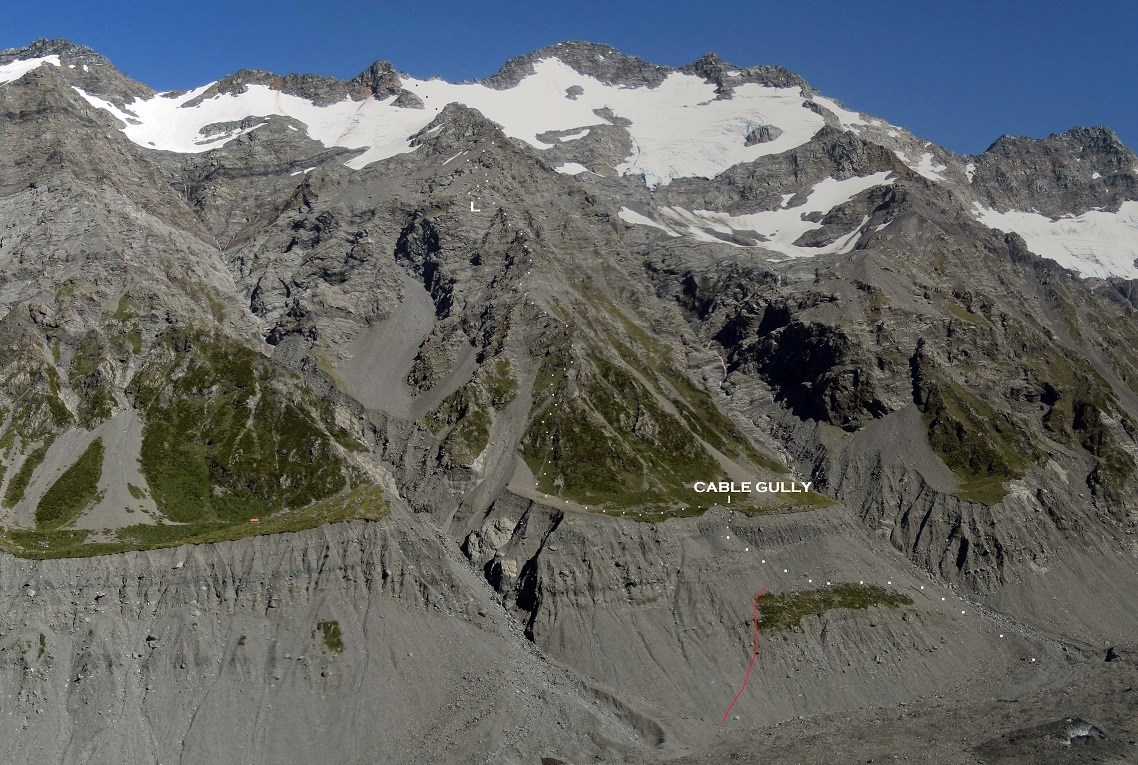Consult park staff at the Visitor Centre before attempting this route.
From the Hooker Glacier there used to be a route – with the assistance of a cable – up the slumped, vegetated terrace on the moraine wall between the Fitzgerald and Copland guts. This is now well beyond repair and the only feasible alternative is to use the lower section of Copland Stream, climbing up to about 1200m before turning left to join the old route up Copland Ridge.
Once on the ridge, the old track is occasionally evident. Travel up the prow of the ridge, following your nose around obstacles. There are a number of options all of a similar difficulty and eventually the ridge narrows to a final section before the baked bean can barrel of Copland Shelter is reached at 1960m.
Above the shelter, climb to the right of the rock ridge, tending right on a diagonal snow slope (this is exposed, with a serious run-out) until gently-angled snow is reached. The Copland Pass is any one of a number of rock notches, but the best one to use is the left-most notch. Late in the summer, schrunds on the eastern slopes and adjacent to the rock can present difficulties. From the pass, drop directly down a 50m rocky gut on the western side to meet the Jubilee Route from FitzGerald Pass in the basin at about 1800m.
Times:
White Horse Hill to Copland Shelter: 8–10 hrs
Copland Shelter to Pass: 1–1.5 hrs
Copland Pass to Douglas Rock Hut: 3–4 hrs
- P1
- Alpine (Commitment) III
- Alpine (Technical) 2+

The cable gully isn't technically hard to climb/unclimb but wearing a helmet is almost mandatory. A 7mm rope is also a very good and safe option for going down this very crumbly moraine when the cable is wet (or in case of rockfalls). The cable trigged a big rock fall while I was going down last weekend... Not fun at all.
Another remark: a rope is recommended for climbing the glacier just before the pass.
In reply to The cable gully isn't by Nibor Nodoj
Has it changed that much? Always been steep snow slope.
In reply to Has it changed that much? by cragrat
The snow was blown and very hard (went up there just after the sunrise). If you are experienced, of course, it's very easy but my friend (a beginner) was very worried and felt unsafe during the ascent. So, it was also scary for me to watch him climb... A piece of rope could have avoided those issues.